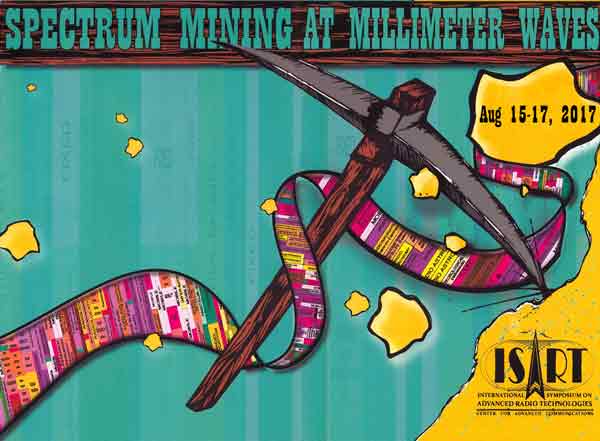Institute for Telecommunication Sciences
Visit ITS's Main Website.
The Institute for Telecommunication Sciences (ITS), located in Boulder, Colorado, is the research and engineering arm of NTIA. ITS provides core telecommunications research and engineering services to promote:
- Enhanced domestic competition and new technology deployment
- Advanced telecommunications and information services
- More efficient use of the radio frequency spectrum
ITS also serves as a principal Federal resource for investigating the telecommunications challenges of other Federal agencies, state and local governments, private corporations and associations, and international organizations. In particular, this includes assisting Federal public safety agencies, the FCC, and agencies that use Federal spectrum. Current areas of focus include:
- Research, development, testing, and evaluation to foster nationwide first-responder communications interoperability
- Test and Demonstration Networks to facilitate accelerated development of standards for emerging communications devices
- Analysis and resolution of interference issues
ITS Director: David Goldstein
David's email
Contact
Institute for Telecommunication Sciences
325 Broadway, MC ITS.D
Boulder, CO 80305–3337
(303) 497–3571
ITSInfo
Related content
ITS Spectrum Efficiency Report Examines the Past, Looks to the Future for New Solutions
Every new innovation in connected devices promises exciting possibilities for the future, but it also means greater demand for spectrum, a critical and limited resource used both by the public and private sectors.
NTIA is committed to ensuring that the government’s use of this valuable resource is as efficient and effective as possible. But what does it mean to be an efficient user of spectrum? And how can future systems make better use of spectrum? NTIA’s research laboratory, the Institute for Telecommunications Sciences (ITS), digs into these questions in a new report providing a thorough survey of the history of spectrum efficiency. ITS reviewed more than 50 years of studies examining domestic and international spectrum efficiency to hone insights for future research.
The report found broad consensus on fundamental spectrum efficiency metrics, which consider increasing productive spectrum use and reducing spectrum blocking. Studies also agreed that spectrum efficiency metrics are most appropriate for comparing similar spectrum dependent systems or for optimizing the deployment of similar systems within a frequency band.
Based on the research, ITS makes a number of recommendations addressing spectrum sharing, and suggestions for how best to focus future spectrum efficiency studies to enable the United States to maximize spectrum opportunities.
ITS Research Offers New Avenues for Improving Speech Recognition in Wireless Communications
Noise is one of the more vexing communications issues first responders face during emergencies. Emergency scenes are often loud and chaotic, and responders must compete with background noise — sirens, yelling, a roaring fire, severe weather and more — when trying to communicate with the command center and each other.
Improving over-the-air transmissions so that essential verbal communications can be heard above background noise is part of the goal of signal processing, a decades-long specialty of NTIA’s research laboratory, the Institute for Telecommunication Sciences (ITS). This week, ITS is presenting research that offers new avenues for addressing speech separation problems while enabling more efficient use of spectrum. The research could lead to solutions that produce higher speech quality, better speech intelligibility and less distorted sound — while using less bandwidth.
Annual Spectrum Symposium Will Examine Millimeter Waves

Spectrum capacity discussions have often focused on the lower frequency bands (below about 6 GHz) because those signals are able to travel significant distances without being interrupted by environmental factors. But these lower frequency bands do have a drawback for wireless transmission in a data-hungry age – available bandwidth is limited.
Until recently, higher frequencies were not considered useful for outdoor transmissions, since their signals are susceptible to propagation loss in bad weather and can’t travel through buildings. However, advances in technology are beginning to unlock their potential.
Higher radio frequencies, from roughly 20 to 300 GHz, are considered promising spectrum for the next generation of wireless technologies, including 5G. Attention is particularly concentrated on the millimeter wave (mmWave) or Extremely High Frequency (EHF) bands, 30–300 GHz. The bandwidth available in the millimeter wave frequency range could increase the speed of cellular Internet service by more than ten times.
